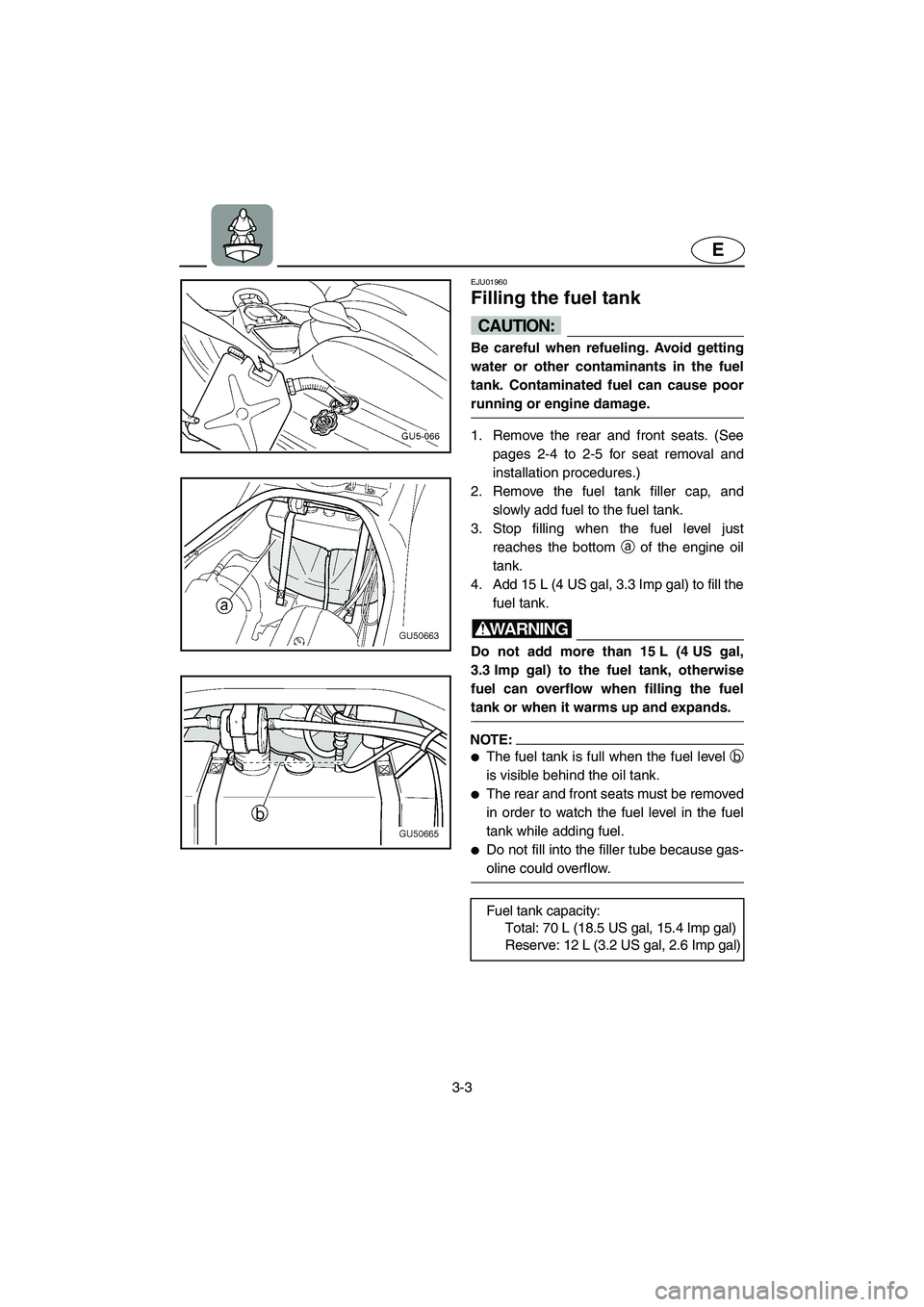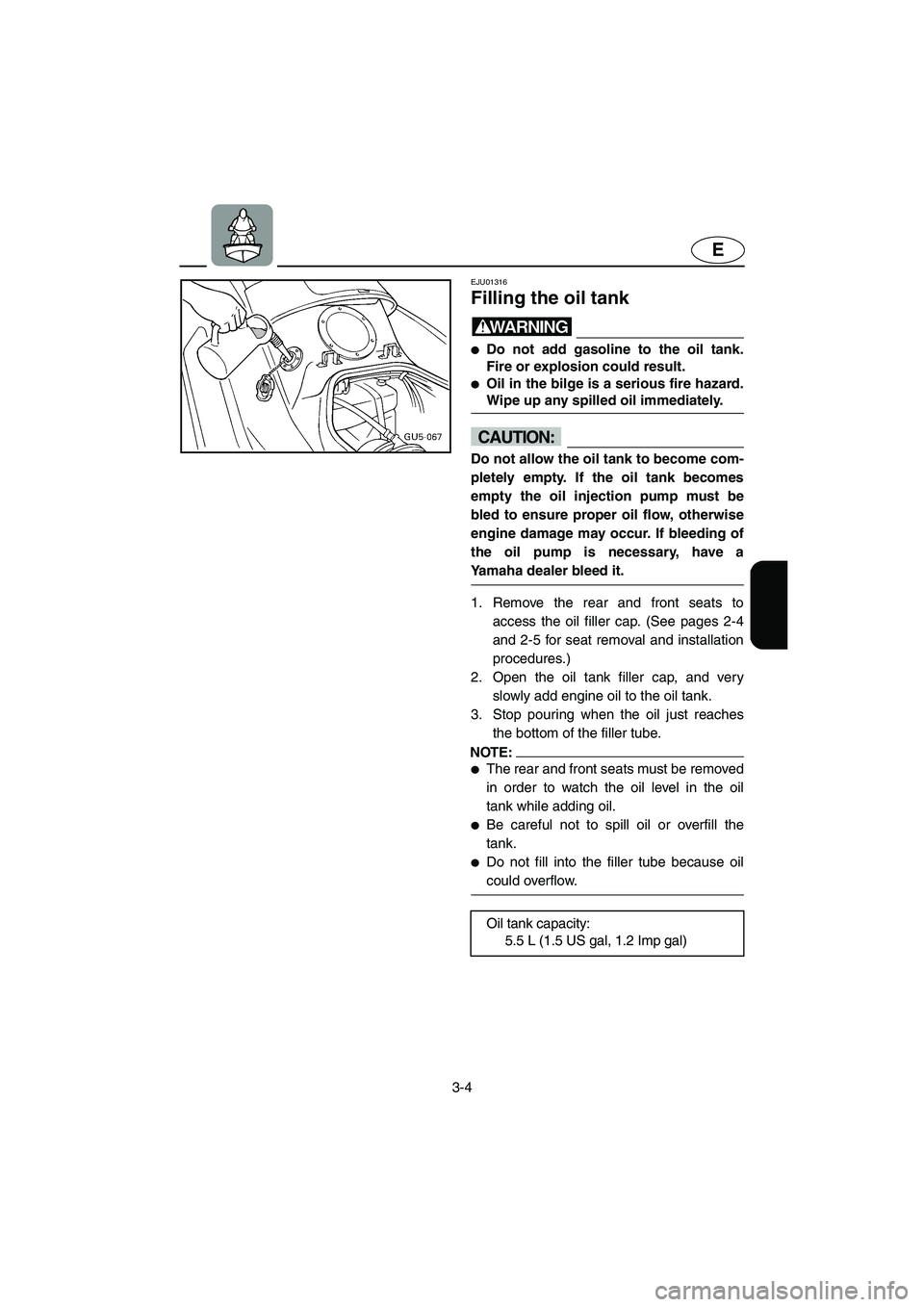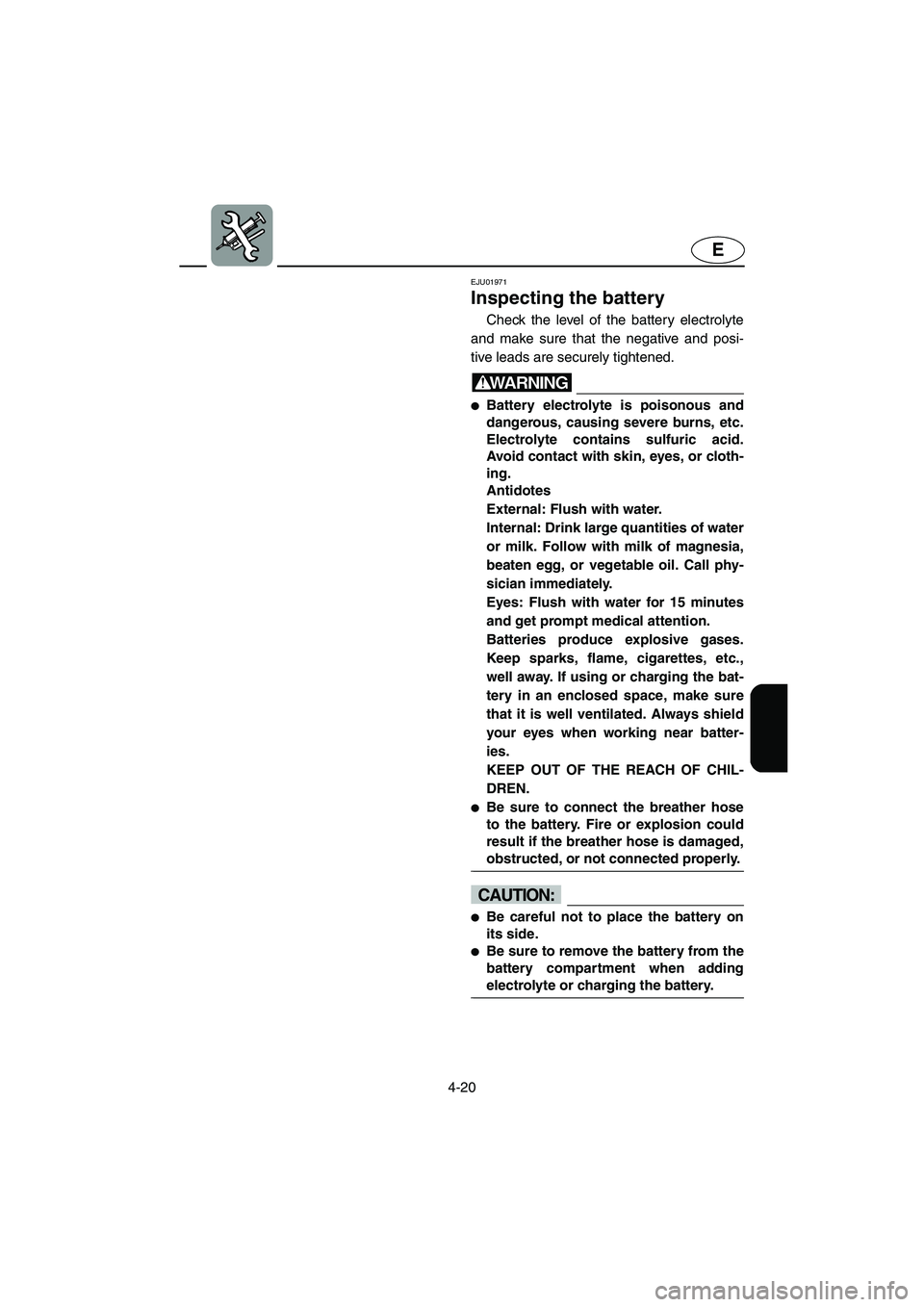Page 60 of 134

3-3
E
EJU01960
Filling the fuel tank
CAUTION:@ Be careful when refueling. Avoid getting
water or other contaminants in the fuel
tank. Contaminated fuel can cause poor
running or engine damage.
@
1. Remove the rear and front seats. (See
pages 2-4 to 2-5 for seat removal and
installation procedures.)
2. Remove the fuel tank filler cap, and
slowly add fuel to the fuel tank.
3. Stop filling when the fuel level just
reaches the bottom a of the engine oil
tank.
4. Add 15 L (4 US gal, 3.3 Imp gal) to fill the
fuel tank.
WARNING@ Do not add more than 15 L (4 US gal,
3.3 Imp gal) to the fuel tank, otherwise
fuel can overflow when filling the fuel
tank or when it warms up and expands.
@
NOTE:@ �The fuel tank is full when the fuel level b
is visible behind the oil tank.
�The rear and front seats must be removed
in order to watch the fuel level in the fuel
tank while adding fuel.
�Do not fill into the filler tube because gas-
oline could overflow.
@
Fuel tank capacity:
Total: 70 L (18.5 US gal, 15.4 Imp gal)
Reserve: 12 L (3.2 US gal, 2.6 Imp gal)
UGU572.book Page 3 Wednesday, August 28, 2002 1:31 PM
Page 61 of 134

3-4
E
EJU01316
Filling the oil tank
WARNING@ �Do not add gasoline to the oil tank.
Fire or explosion could result.
�Oil in the bilge is a serious fire hazard.
Wipe up any spilled oil immediately.
@
CAUTION:@ Do not allow the oil tank to become com-
pletely empty. If the oil tank becomes
empty the oil injection pump must be
bled to ensure proper oil flow, otherwise
engine damage may occur. If bleeding of
the oil pump is necessary, have a
Yamaha dealer bleed it.
@
1. Remove the rear and front seats to
access the oil filler cap. (See pages 2-4
and 2-5 for seat removal and installation
procedures.)
2. Open the oil tank filler cap, and very
slowly add engine oil to the oil tank.
3. Stop pouring when the oil just reaches
the bottom of the filler tube.
NOTE:@ �The rear and front seats must be removed
in order to watch the oil level in the oil
tank while adding oil.
�Be careful not to spill oil or overfill the
tank.
�Do not fill into the filler tube because oil
could overflow.
@
Oil tank capacity:
5.5 L (1.5 US gal, 1.2 Imp gal)
UGU572.book Page 4 Wednesday, August 28, 2002 1:31 PM
Page 113 of 134

4-20
E
EJU01971
Inspecting the battery
Check the level of the battery electrolyte
and make sure that the negative and posi-
tive leads are securely tightened.
WARNING@ �Battery electrolyte is poisonous and
dangerous, causing severe burns, etc.
Electrolyte contains sulfuric acid.
Avoid contact with skin, eyes, or cloth-
ing.
Antidotes
External: Flush with water.
Internal: Drink large quantities of water
or milk. Follow with milk of magnesia,
beaten egg, or vegetable oil. Call phy-
sician immediately.
Eyes: Flush with water for 15 minutes
and get prompt medical attention.
Batteries produce explosive gases.
Keep sparks, flame, cigarettes, etc.,
well away. If using or charging the bat-
tery in an enclosed space, make sure
that it is well ventilated. Always shield
your eyes when working near batter-
ies.
KEEP OUT OF THE REACH OF CHIL-
DREN.
�Be sure to connect the breather hose
to the battery. Fire or explosion could
result if the breather hose is damaged,
obstructed, or not connected properly.
@
CAUTION:@ �Be careful not to place the battery on
its side.
�Be sure to remove the battery from the
battery compartment when adding
electrolyte or charging the battery.
@
UGU572.book Page 20 Wednesday, August 28, 2002 1:31 PM